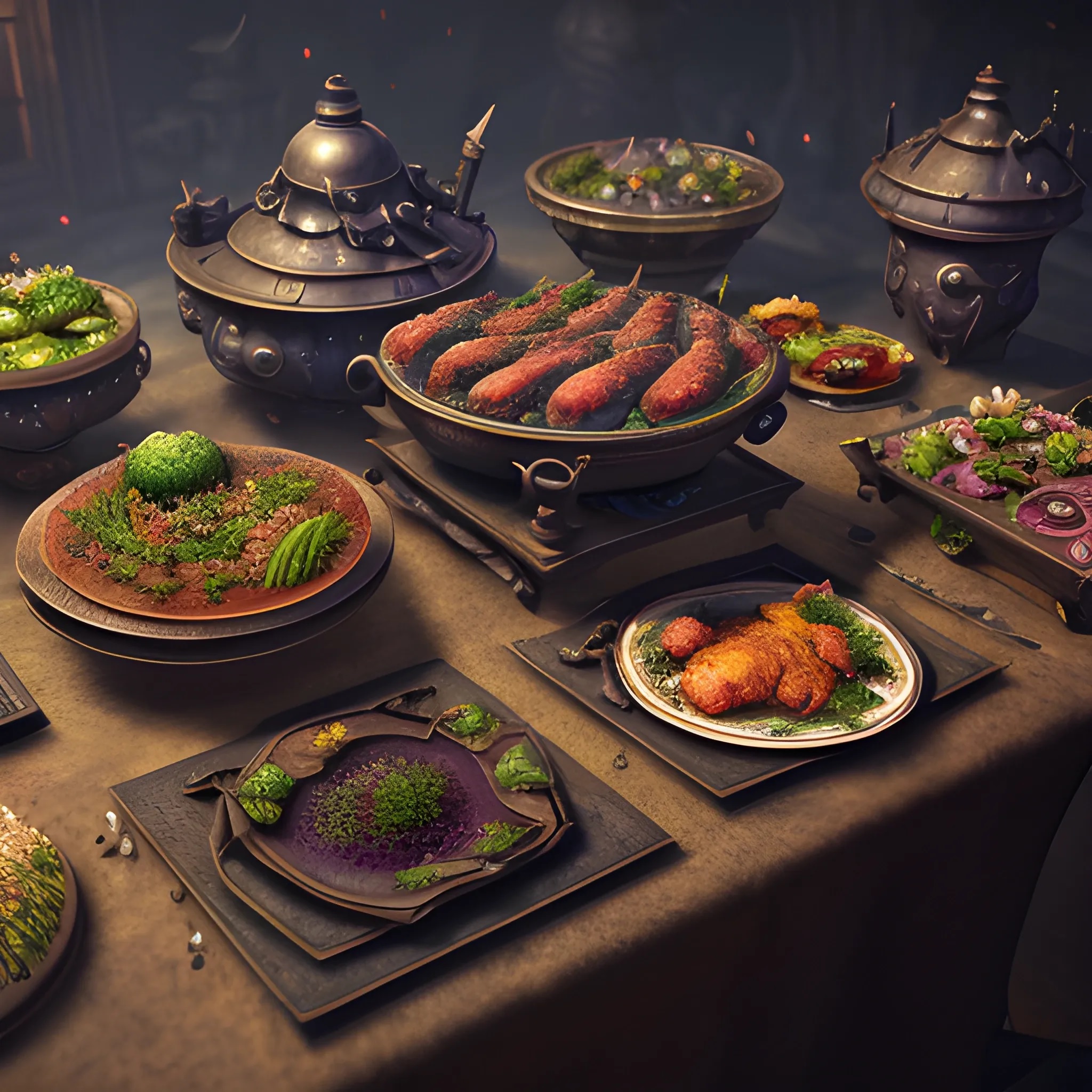Nutrition & the Preparation of Food
Nutrition and Preparation argues that the food consumed in the game world should vary in kind, so that apart from the amount of food that characters must consume, the taste and quality of the food should also matter. Characters cannot simply live on bread and water. They must eat, at the very least, "palatable food" — and, when possible, "good" food.
This isn't always easy while adventuring. The manner of food that can be obtained, and where it can be prepared, improves considerably in urban settings, where an interior kitchen is available. Food cooked in a camp, which must endure in a character's pack for days, is far less desirable and the value gained from eating such victuals deserve attention within the game's rules.
Food Goodness
A food's versatility and taste depends upon it's general caliber. Ordinary food, while resistant to spoiling, has little to offer as a meal, if not blended with more discerning or quality foods. Thus the "goodness" of a food describes it's capacity to entice the senses. There are five general standards of goodness: durables, staples, fresh foods, premium foods and delicacies.
Durables
These include preserved meats such as jerky, dry sausage, salt-pork, sauerkraut and dried fish; also potable plant products like polished rice and dried pulses; and forage such as dried mushrooms, grains, wild nuts, seeds and dried fruits. Food that is foraged falls into this category. Note that the category includes mainly unprepared foods, whereas "staples," below, include versions of these foods after processing. Durable foods may be edible after months have passed, and even years.
Staples
These include processed foodstuffs such as flour, refined salt, honey, cheese, butter and biscuits, root vegetables and tubers, and beverages such as ale, beer, mead, wine and distilled drink. The inclusion of these latter beverages especially raise the quality of the meal. As products, they generally have a lifespan of 2 to 8 months.
Fresh Foods
These include recently picked vegetables and fruits, butchered meats, whole or raw milk and cream, among others. For each there is a short time before the food spoils, before it is processed or cooked — in some cases as little as 12 hours, in others as much as 12 days. Meanwhile, the wholeness of the food is in a state of constant decline, but may be "rescued" even after it's begun to go bad. Also included in the category, and having longer lifespans, are herbs such as basil, chamomile, cumin, dill, rosemary, parsley and sage, along with tea leaves and coffee beans.
